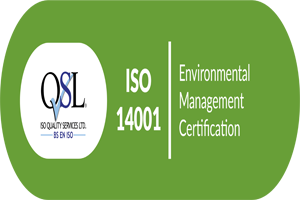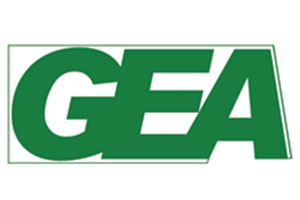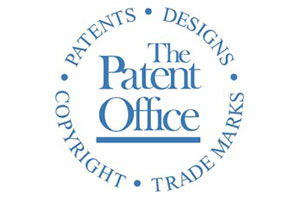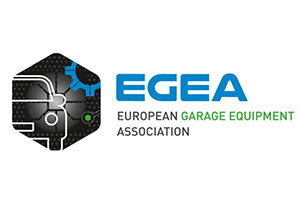Smokehead Maintenance
Cleaning The Smokehead
- Turn the Smokehead off
- Remove the End Caps from each end of the smokehead
NOTE:
The Sample Chamber operates at between 72 to 96°c and some of this heat can transfer to the Transmitter and Receiver modules.
- Carefully remove both the Transmitter and Receiver and inspect them for signs of Dirt/Contamination
- With a cloth clean both lenses and visually inspect the sample chamber for build-up of dirt and before re-installing the lenses clean the chamber with a bottle brush or dry airline.
- Remove the sample pipe and check the smoke intake pipe for signs of dirt, if it requires cleaning, turn over the smokehead and remove the baffle plate from the underside of the smokehead nearest the smoke intake nozzle.
- Loosen the screw and slide the thermocouple away from the intake chamber, again clean using the bottle brush and dry airline.
- Slide the thermocouple back into the intake chamber and re-tighten the screw. Re-fit the baffle plate and sample hose.
Smokehead Feet
On a weekly basis check the smoke head feet for wear, worn feet will inhibit the smoke head being docked correctly and can cause damage to the charger and in return cause battery or charging issues for the smoke head.On a weekly basis check the smoke head feet for wear, worn feet will inhibit the smoke head being docked correctly and can cause damage to the charger and in return cause battery or charging issues for the smoke head.
NOTE:
Never exceed the 7.5 AMP rated fuses in the rear of the analyser / docking station.
Replacing a Battery
To access the battery, you will need to remove the lid, however before removing the lid, please ensure the Smokehead is Turned Off.
For Smokeheads with the serial number ending in “A” they can only be turned off in the software, please follow the procedure below:
- Select OPTIONS from the Main Menu
- Select SMOKEHEAD SERVICE OPERATIONS
- Followed by TURN SMOKEHEAD OFF
The Smokehead will turn off.
For Smokeheads with the serial number ending in “B”, these can be turned On and Off from the POWER INDICATOR switch on the top of the Smokehead.
Once the Smokehead is off, you can remove the Smokehead Lid:
- Break the VOID IF BROKEN label and remove the six screws holding the lid.
- CAREFULLY lift the lid away ensuring the Communication Ribbon connecting the Lid to the Smokehead PCB is not removed or damaged.
- Unscrew and remove the faulty battery.
- Install the new battery and screw it back into place.
- CAREFULLY slide the lid back into place ensuring not to trap or damage the Communications Ribbon.
- Re secure the lid to the Smokehead using the six screws.
- Place the BATTERY INSTALLED – VOID IF BROKEN label supplied with the battery in the same place as the void label you have broken or removed.
- Turn on the Smokehead.
It is very important to replace the void label with the temporary one provided, this is to ensure the validity of your test results, replacing the battery WILL NOT affect your test results.
An engineer will carry out the necessary paperwork and install the correct Void label at his/hers next visit.
The Premier Diagnostics DS2 Smokehead has been designed for minimum operator maintenance.
The DS2 has an automatic lens monitoring system built into the smokeheads firmware, this enables a build-up of dirt on the Transmitter or Receiver lenses to be automatically compensated for during its ZERO/SPAN Test. This is achieved by the electronics driving the Transmitter harder to maintain the required 100% light transmission. Before the Transmitter reaches its maximum range, to compensate for the dirty lenses a warning to clean the lenses is triggered. If the warning is not observed the dirt will gradually build up until the operation of the smokehead is inhibited.
In some extreme cases of smoke pollution, the smoke chamber, smoke intake pipe and exhaust may require cleaning. This can be determined with a simple inspection of the smokehead when the sample pipe and lenses are removed.
NOTE:
- Never remove the Lid of the smokehead, inside are some connecting ribbons connecting the Power Indicator Panel to the Main Electronics PCB, Breaking the Integrity / Void seal will invalidate the calibration and warranty of the smokehead.
- Except to replace a battery – (details below)
Gas Analysers
Routine Maintenance
Please follow the recommendations listed below, adopting a regular preventative maintenance schedule will help ensure trouble-free service.
FILTER ELEMENTS
These are located on the rear panel of your Analyser. This filter must be checked daily and changed when the element becomes dirty or saturated.
DO NOT wait for a permanent “Low Flow” warning to appear on the screen. The filter is fitted to protect your Analyser from Carbon, Soot and other detrimental contaminates.
Only use approved filters in your Analysers.
They form part of your Analysers Accreditation and warranty.
CHARCOAL FILTER
A charcoal filter is fitted to the fresh air port located on the rear of your analyser.
This filter absorbs Hydrocarbon contaminates during the “Zero Bench” routine and prevents HCs entering the Bench during the zero procedure.
This filter will be replaced by an engineer during a calibration visit.
SAMPLE HOSE AND PROBE ASSEMBLY
The sample hose and probe assembly are manufactured from high quality materials.
DO NOT LEAVE THEM LYING ON THE FLOOR WHERE THEY CAN BE DRIVEN OVER.
Check the entire length of the Sample Hose (from tip to end of filter assembly) for damage on a weekly basis. Repair or replace damaged parts.
Only use approved parts in your Analysers.
They form part of your Analysers Accreditation and warranty.
CAUTIONS
DO NOT SPRAY CLEANING AGENTS DIRECTLY ONTO YOUR ANALYSER, NEVER USE SOLVENT BASED CLEANING AGENTS, Spray the cleaning agent ON TO A SOFT CLOTH and wipe all surfaces.
FITTING A NEW O2 CELL
The O2 SENSOR has an operation life of between 12 and 18 months, (warranty 6 months) when this cell needs replacing a dialogue box appears on the screen stating “REPLACE O2 CELL”.
When this appears complete the following:
- Select “OPTIONS” from the main menu
- Select “FIT NEW O2 SENSOR
- Select the make of the O2 cell (printed on the side of the sensor) and press “ENTER”
- Follow the instructions on the screen, when complete, press “ENTER”
- The equipment will now calibrate the new O2 Sensor and return to the main menu.
NOTES:
When replacing the O2 Cell, the following points should be observed:
- Remove the Three Pin Harness Connector from the top of the O2 cell CAREFULLY
- Observe the correct position of the connectors “locating Shoulder”
- Unscrew the Old sensor and replace with the New Unit.
- DO NOT OVER TIGHTEN. The new sensor should be finger tight.
- Carefully replace the Three Pin Harness Connector ensuring the locating shoulder is closest to the connector retaining tag located inside the cell.
- Recalibrate the O2 Cell as described above.
Routine Fault Finding
Please follow the recommendations listed below, adopting a regular preventative maintenance schedule will help ensure trouble-free service.
LOW FLOW
Your Premier Analyser monitors the flow of gasses at all times, should a blockage occur at any point in the sample system, a dialogue box will appear on the screen stating “Low Flow” which will restrict you from testing.
When “LOW FLOW” occurs, you should perform the following:
Step 1
Check the FILTER ELEMENTS – change if necessary.
If problem persists
Step 2
Remove the SAMPLE HOSE from the Filter Assembly
If “LOW FLOW” disappears the blockage is between the flexible tip and the end of the sample hose, CHECK THE HOSE FOR KINKS OR CRUSHED WALLS.
Replace as necessary.
If OK, blow hose and sample probe out using a DRY AIRLINE.
CAUTION – Only blow the hose assembly out if it is disconnected from the equipment and safe to do so. Only blow from the Water Trap Union End towards the Flexible Tip. NEVER blow towards the water trap union.
Step 3
LOW FLOW persists – Please call the Premier Diagnostics Service on 01295 262688
HC HANG – UP
Your Premier Analyser continuously monitors for Hydrocarbon contamination of the sampling system. Should the equipment detect Hydrocarbons in excess of 25 ppm whilst monitoring free air through the sampling system, a dialogue box will appear on the screen stating “HC HANG-UP” and “LOCK YOU OUT” from testing. This condition is usually resolved by replacing the filter, follow the diagnostic routine itemised under “PERSITENT LOW FLOW”. During this routine with the equipment in “manual mode” watch for the “HC HANG-UP” warning to disappear.
RECTIIFICATION PROCEDURE ARE THE SAME AS “LOW FLOW”.
LEAK TEST FAIL
Should a leak test fail, the following test procedures should be followed to identify the cause:Should a leak test fail, the following test procedures should be followed to identify the cause:
- Check that all “O” rings and seals in the Filter Assembly are in good condition and are correctly installed.
- Perform another leak test. If the test passes continue testing.
- Remove the flexible tip from the hose.
- Block the end of the hose and perform another leak test.
If the test passes, the leak is almost certainly in the flexible tip, replace tip and re test.
If Leak Test Failed when hose was blocked
- Remove hose from filter assembly and block the inlet, perform leak test, if passes, replace hose and continue testing
If leak test fails please call Premier Diagnostics Service on 01295 262688







